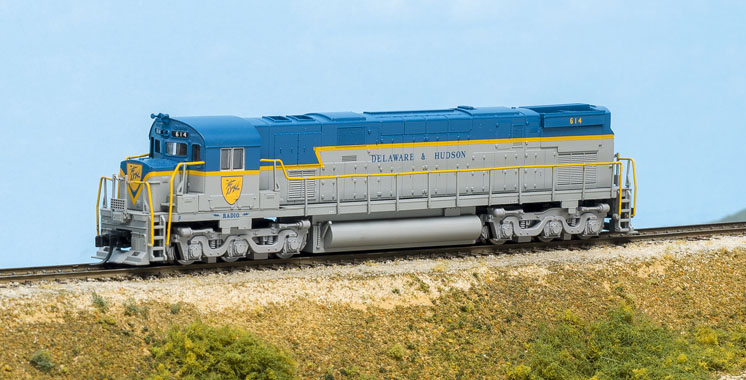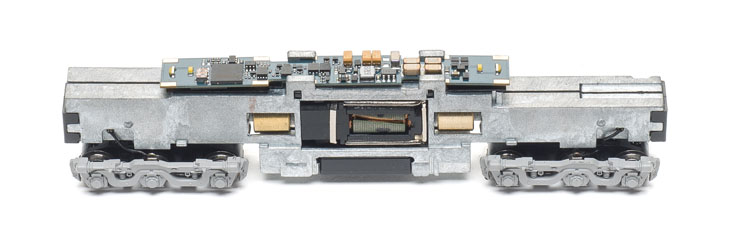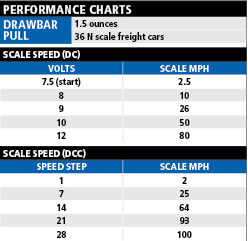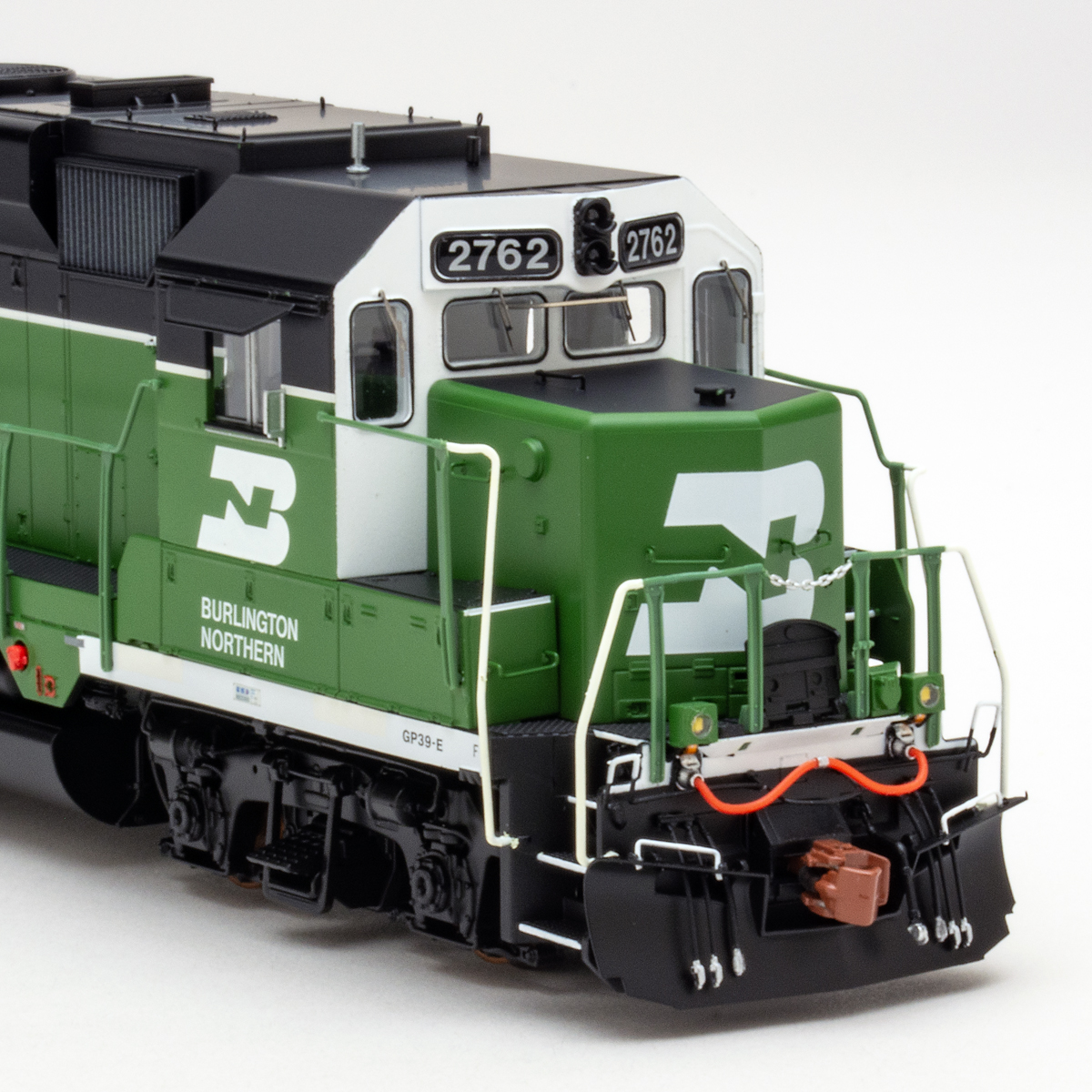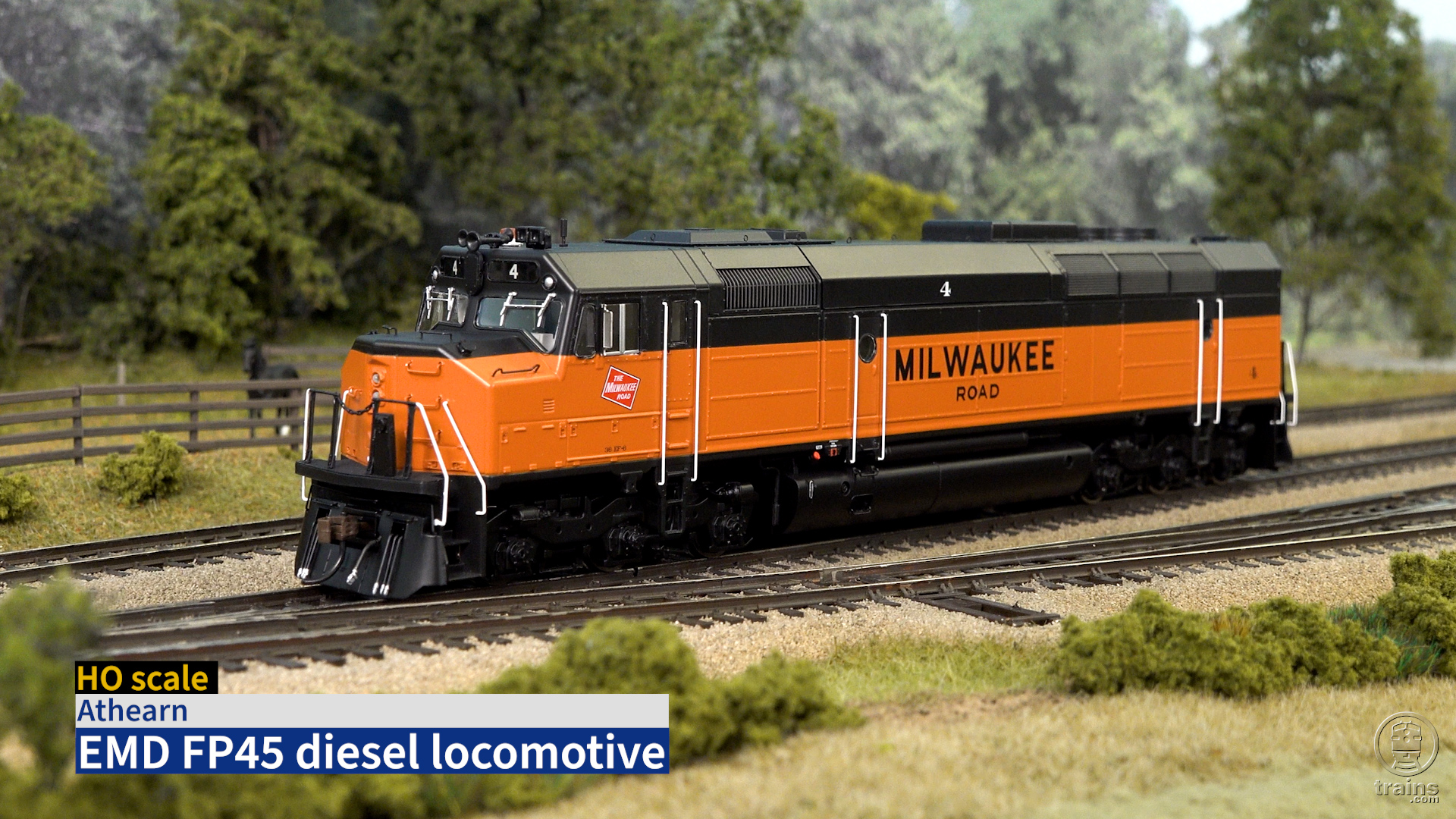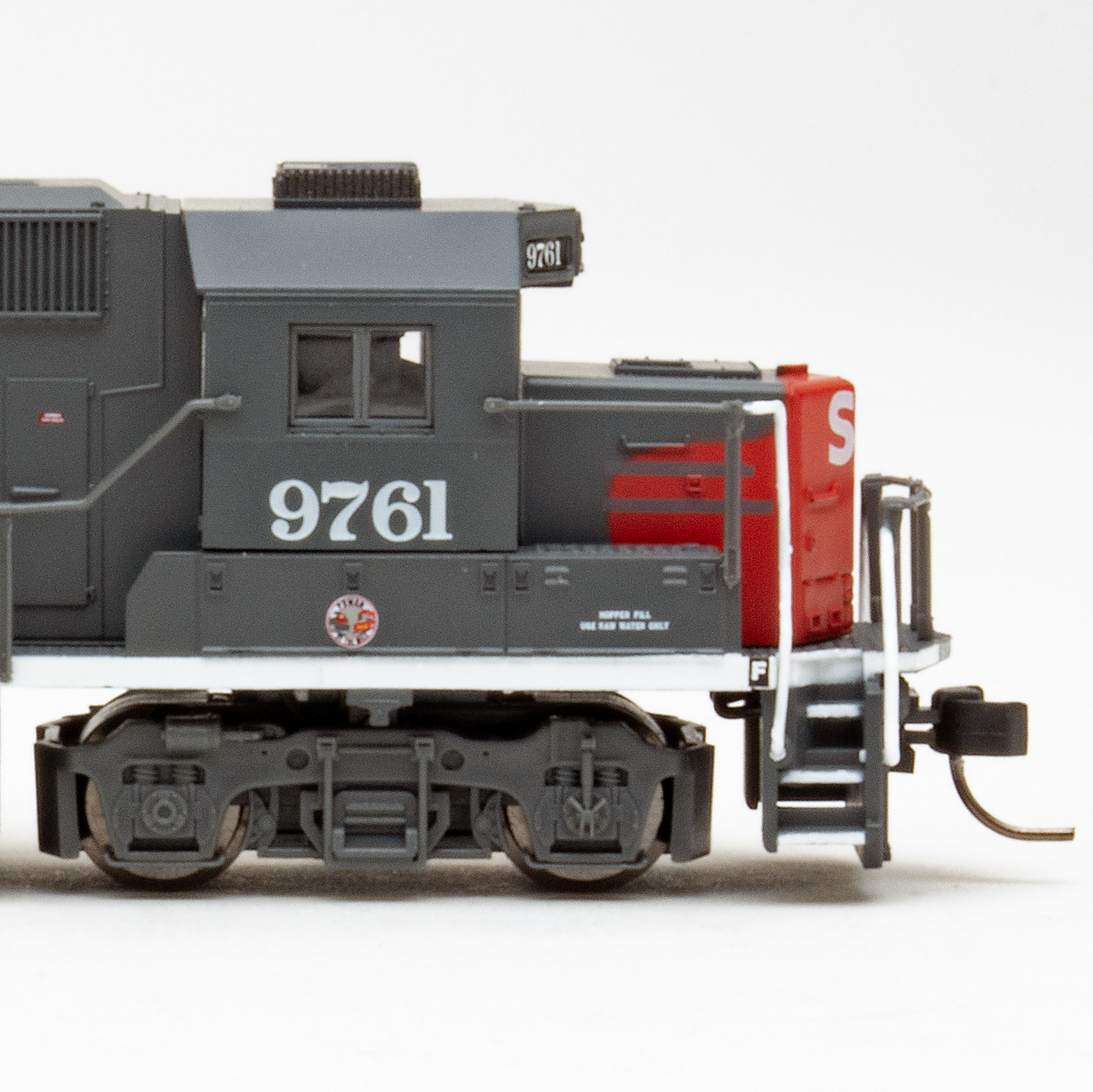Big Alcos are back in N scale from Atlas Model Railroad Co. We reviewed a direct-current (DC) version from an earlier production run in the August 2004 Model Railroader. The latest run is available with a factory-installed ESU LokSound decoder that operates on Digital Command Control (DCC) as well as DC layouts. A sound-ready DC version that includes a factory-installed speaker is also available.
The prototype. In the early 1960s, Alco redesigned its road diesel-electric locomotive line to better compete with rivals, General Motors Electro-Motive Division and General Electric. One of the first locomotives launched as part of Alco’s new Century series was the six-axle C-628. Not quite the success story Alco hoped for, the firm built only 186 C-628 diesels between 1963 and 1968.
The Alco C-628 featured a 2,750 hp 16-cylinder 251C diesel engine. Although the C-628s were primarily freight haulers, 10 of the locomotives built for the National Railways of Mexico received steam heat generators for passenger service.
The Delaware & Hudson purchased its 18 C-628s in 1964 and 1965. The locomotives proved capable fast freight haulers and served system-wide on the D&H for nearly 15 years. In the late 1970s, the D&H began selling its C-628 fleet to locomotive lessors. Some of the former D&H Alcos survived through the 1980s working in Mexico.
The model. Using much of the same tooling as the 2004 release, the Atlas model matches prototype drawings in the Model Railroader Cyclopedia: Vol. 2, Diesel Locomotives (Kalmbach Books, out of print).
The plastic body shell features well-defined molded detail including correctly placed grills, engine-access doors, m.u. hoses, and non-working class lights above the number boxes.
The walkways along the hood and front and rear pilot platforms feature a molded safety-tread pattern.
The separately applied handrail and stanchion assemblies are made of flexible engineering plastic to resist breaking. The front and side cab windows all feature clear plastic glazing.
The Atlas model accurately captures D&H’s handsome lightning-stripe livery. Paint coverage is smooth, and there’s sharp color separation between the stripes. All lettering and heralds are correctly placed per prototype photos.
The dual-flywheel-equipped motor is in the center of the split die-cast metal frame. Drive shafts connect the motor to truck-mounted gearboxes.
All 12 wheels pick up track power. Wires connect the trucks to the frame to reliably transmit track power to the decoder mounted atop the chassis. All lighting is supplied by surface mounted light-emitting diodes (LEDs) on the decoder board. The 3⁄16″ x 3⁄8″ x 11⁄16″ plastic speaker enclosure is concealed under the press-fit fuel tank on the bottom of the chassis.
The locomotive easily negotiated the 11″ radius curves and no. 6 turnouts on our N Scale Salt Lake Route layout with a freight train in tow. The model’s 1.5 ounce drawbar pull is equivalent to 36 N scale freight cars on straight and level track.
DC performance. I tested the model on our DC test track using an MRC Tech 4 power pack. After I set the throttle to 6V, I saw the headlight turn on and heard the 251 diesel engine start rumbling.
When I advanced the throttle to 7.5V, the Alco started rolling at 2.5 scale mph and accelerated smoothly to a top speed of 80 scale mph, which matches one of the gearings available on the prototype.
The locomotive has some built-in momentum in DC mode. Like a real diesel-electric locomotive, the diesel engine rpm increased a couple notches before the locomotive started moving. The headlight operated according to the direction of travel. Activating any other user-triggered effects on a DC layout requires an analog sound controller, such as an MRC Tech 6.
DCC performance. As you can see in the charts above, the Alco also accelerated smoothly on our DCC test track. The model’s 100 scale mph top speed was higher than the prototype. However, it’s easy to lower the top speed, set up speed tables, or adjust any other aspect of the model’s performance using configuration variables (CVs).
A programming guide for ESU LokSound decoders can be downloaded for free at www.esu.eu/en. The website also has links for free LokProgrammer software that can be used with or without a LokProgrammer computer interface (sold separately).
In addition to the bell and horn, user-triggered features include the compressor, sanding valve, air release valves, and a realistic dynamic brake effect. Pressing F9 engaged the Heavy Load effect with Drive/Hold. With this effect enabled, the locomotive speed stayed constant while I used the throttle to notch the prime mover up or down.
Using the LokProgrammer, I also enabled another Full Throttle feature called Coast mode. When I trigger this effect, the engine sounds drop to an idle. I could then use the throttle to adjust the speed without notching the engine. This effect is useful for simulating a locomotive drifting downgrade.
The volumes of each individual sound effect as well as the overall volume can be adjusted via CVs. The volume level is impressive, considering the speaker’s small size. All the functions can also be remapped to any desired throttle key.
On our Alco, I lowered the level of the diesel engine sound and set the horn volume to maximum level. I also set up the headlights for manual, non-directional control by mapping the front headlight to F0 and the rear light to F5.
With the top-notch ESU LokSound decoder and accurate details, this Atlas C-628 makes it easy to add the sights and sounds of a six-axle Alco diesel to an N scale roster.
$129.95 (DC, no sound)
Manufacturer
Atlas Model Railroad Co.
378 Florence Ave.
Hillside, NJ 07205
www.atlasrr.com
Era: 1965 to late 1970s (as decorated)
Road names: Delaware & Hudson, National Railways of Mexico (N de M), Southern Pacific (Alco demonstrator patchout). Undecorated versions available in Phase 1, 2A, and 2B variations.
Features
• All-wheel drive and electrical pickup
• Accumate couplers, at correct height
• Atlas Scale Speed motor with dual brass flywheels
• Blackened metal wheels, in gauge
• DC version is DCC sound ready with factory-installed speaker
• Dual-mode ESU LokSound decoder (DCC sound version)
• Weight: 3 ounces





